Today, you’re going to learn exactly when to poach in doubles.
If you’re looking for more confidence at the net in your tennis matches, then this is for you. I’ll actually be showing you the 7 times during a point when you should be poaching in tennis, even if you’re a beginner doubles player.
For example, one of these 7 poaching tips is almost never used by most 3.5 to 4.5 USTA players, and implementing this alone can change your doubles game. This uncommon poaching strategy helped me go from a conservative, timid net player to an aggressive, confident doubles player, who loves to take over the net.
By the end of this tennis lesson, you’ll have 7 times you can start moving forward to poach and gain confidence at the net. First, we’ll cover the advanced to intermediate tips, then I’ll show you 3 poaching tips for beginners.
What is Poaching in Tennis?
Poaching in tennis is done by a player at the net. The player moves across the court to volley the ball out of the air.
COURSE
Net Play Strategy for Doubles
Masterclass on skills, strategy, and mindset for dominant net play in doubles!
- Over 190 minutes of Video Doubles Lessons
- 25 Whiteboard Video Lessons
- Video Analysis of over 30 ATP & WTA doubles points
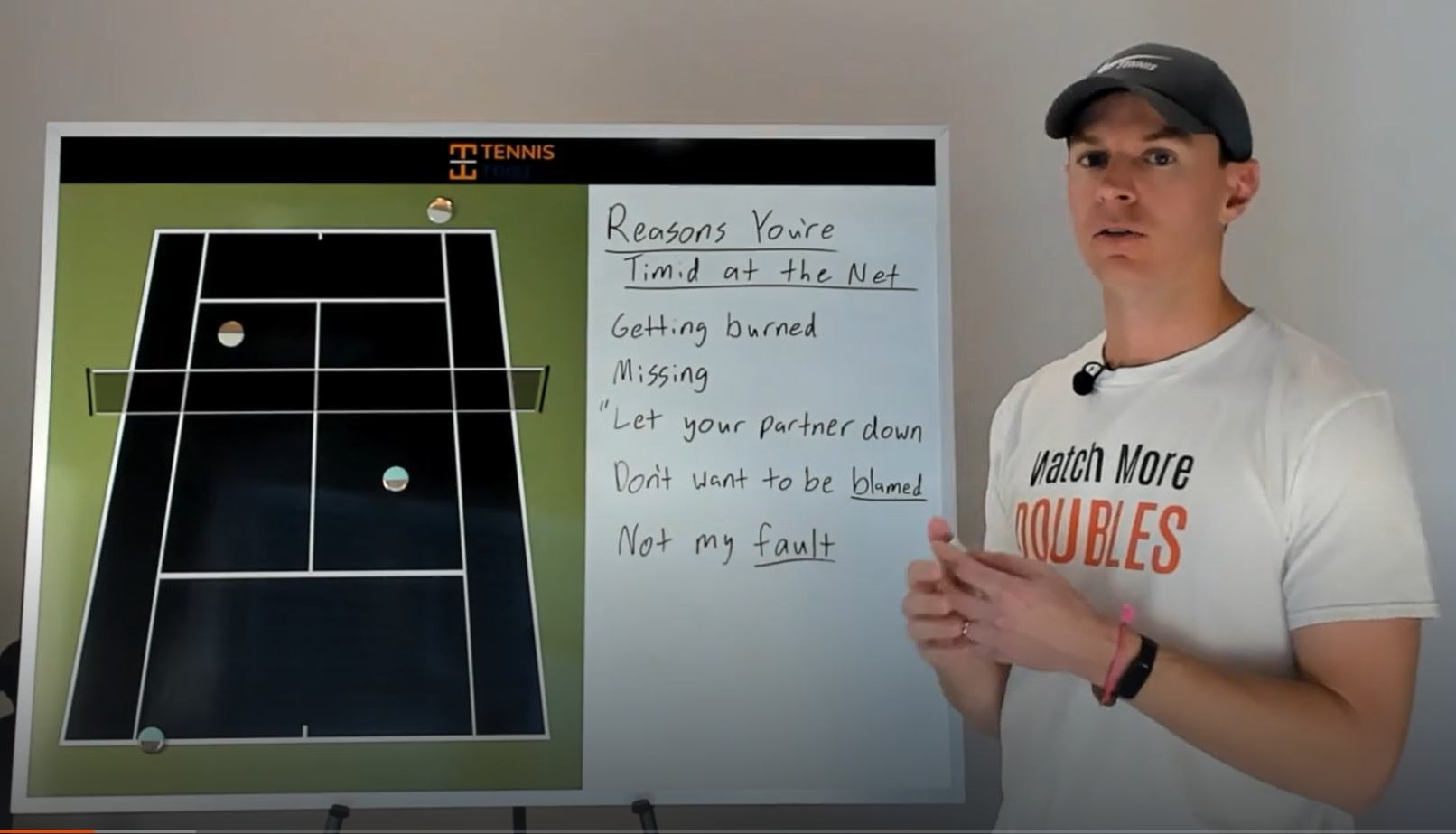
You’ll learn from Will Boucek, an ATP & WTA Doubles Strategy Analyst
The goal of the poach is to end the point with a winner or forced error. As the net player, when you poach, you usually don’t want the opponent to see you moving. So, you’ll wait until they hit the ball before moving across to attack it.
Poaching is a doubles strategy that is most often done when your partner is serving. But you can also poach during a groundstroke rally, or even when all players are at the net.
On this point, Bob Bryan poaches after the return.
Advanced Tennis Poaching Tips
These first 4 times to poach are for intermediate to advanced players. If you’re fairly confident in your volleys and net game, start here.
Tip #1: Poach On Low Balls
One of my personal favorite times to poach is when you see a low ball.
The reason this works so well is that when your opponent has a low ball, they have to pop it up to get it over the net. It’s really difficult for them to get pace on it, or change direction and pass you down the alley.
So to poach on a low ball, you have to read the ball as it crosses the net, and read where your opponent is.
If they’re back at the baseline, for example, and my partner hits a low slice that lands before the service line, I’ll follow the ball into the net. This will cut off all their angles and force a miss or I’ll get an easy ball to smash to end the point.
MOST POPULAR COURSE!
25 Winning Doubles Tactics
Guaranteed to help you play smarter & win more matches.
- Over 50 video doubles lessons
- 60+ ATP & WTA points analyzed
- Nearly 3 hours of strategy content
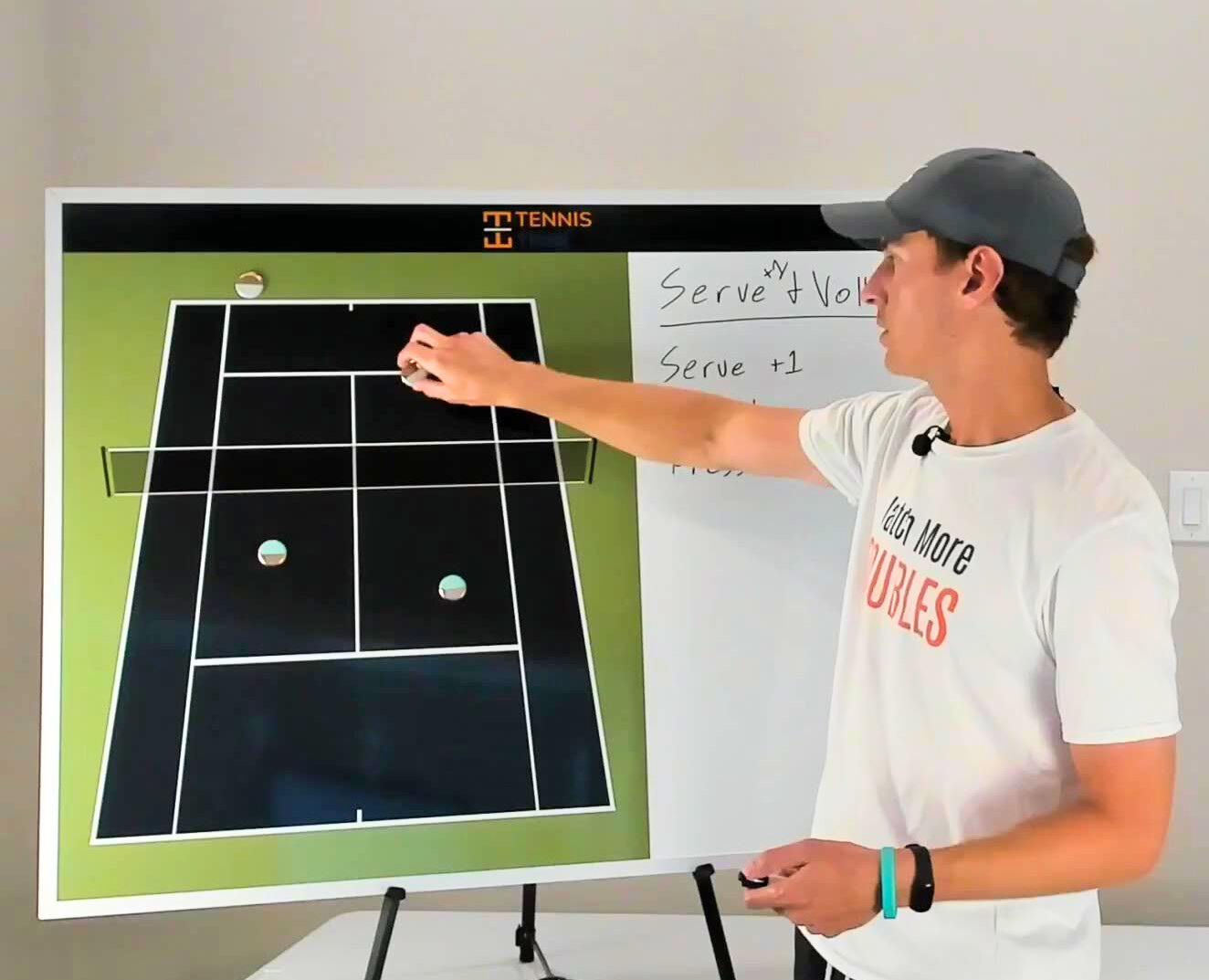
Will Boucek – Doubles Strategy Analyst for ATP & WTA Players and Team USA at the 2024 Olympics
Another time I like to use this one is when both opponents are at the net and my partner hits a low groundstroke at their feet. They almost never see it coming but poaching here almost always ends the point. This is a great return strategy for doubles as well. If your partner hits their return low, you can poach.
Tip #2: Poach When You’re the Stronger Doubles Player
This tip is a little more advanced, and not used very often in recreational doubles. But it can actually be really effective to poach when you’re the stronger doubles player.
So why does this work?
When you’re the stronger player, the opponents will usually be hitting the ball at your partner. And you probably don’t want your partner getting stuck in a rally.
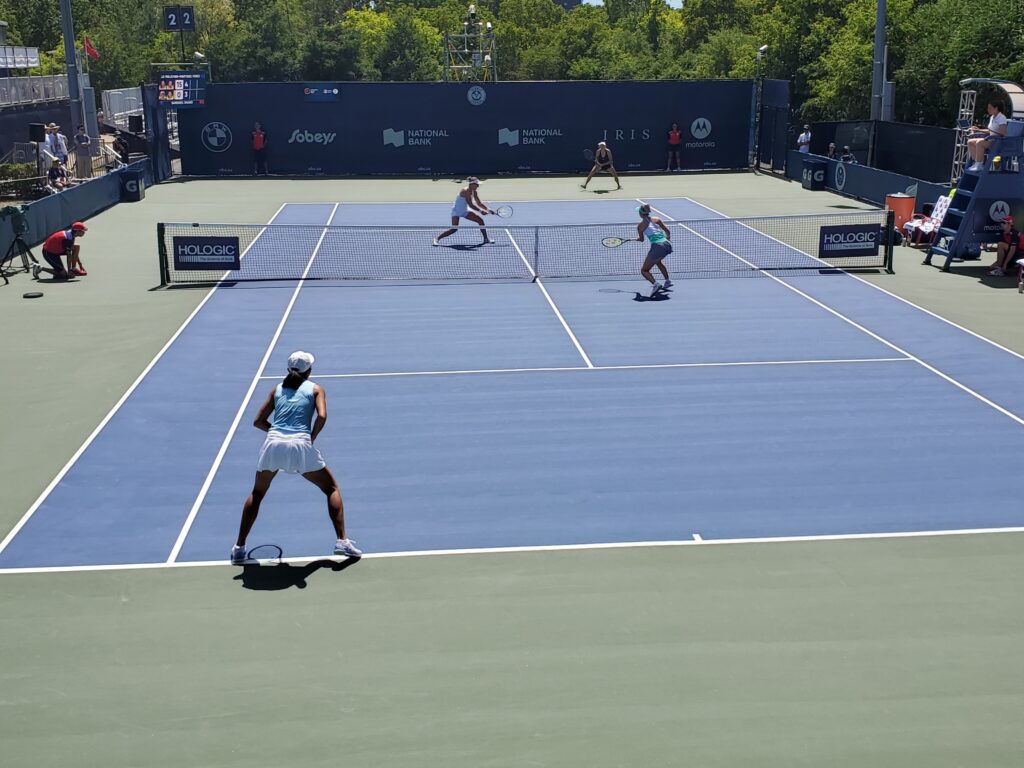
So, by poaching every now and then as the opponent hits the ball to your partner, you’ll be able to pick off the crosscourt shots. This will make the opponent feel pressure as the match goes on and you’ll get in their head. They’ll start trying to hit harder or wider groundstrokes and likely miss.
I use this in 8.0 mixed and combo doubles a lot. I’m a 4.5 player and play with a 3.5 or 4.0 partner. I’ll poach when my partner is in a baseline rally against a stronger player.
Sometimes, even when we’re both at the net, I’ll randomly poach on balls because I know the other team is most likely going to volley back at my partner. I like to do this from the ad side so I have an easy forehand volley to finish the point.
Tip #3: Poach Before The Opponent Starts Their Swing
Another great time to poach is before the opponent starts their swing!
This works well especially when your partner has a big serve.
Most coaches say to wait until after the opponent starts their swing but you shouldn’t always wait.
Here’s why.
Poaching before the other player hits rarely results in a volley for you, but often results in a missed return by the opponent. They almost always try to hit down the line and usually miss more than half.
I like to start moving towards the center service line, staying low, as the ball crosses the net. The opponent will easily see you moving, but that’s the point. Give them the alley and they’ll often miss and get frustrated. This a one of my favorite serve strategies for doubles.
New Course!
The Mental Game Masterclass
The Mental Side of Doubles You Were Never Taught
- Perform better under pressure
- Beat more talented players
- Come out HOT early in matches
- Avoid mid-match slumps
- Become your own coach
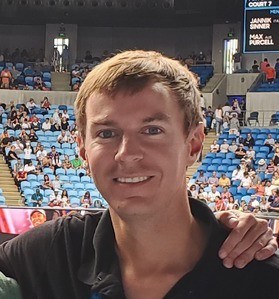
I guarantee this will transform the way you prepare for your next doubles match.
Will Boucek – ATP & WTA Doubles Strategy Analyst
Tip #4: Poach As The Opponent Swings
After implementing poaching strategy number 3, you should also poach as the opponent swings.
One important key to poaching in tennis is to change your timing up throughout the match!
Waiting till the opponent starts their swing means they have to change direction with their shot mid-swing, which is really difficult, or they have to try hitting their return a little harder and wider so you can’t get to it.
Start in the middle of the service box, then move diagonally towards the net across the court right when the opponent starts their backswing. This will often result in a missed return, or a volley for you.
Depending on your quickness and mobility, you can sometimes wait till the last second to poach, and other times fake the poach by going super early and recovering.
Beginner Tips For Poaching In Tennis
Now, I’ll show you when to poach in doubles for beginners or anyone who isn’t as aggressive at the net. These 3 poaching tips will help you get started and develop your confidence at the net.
Tip #5: Poach When The Opponent Has a Backhand
Poaching is all about reading the opponent. One of the best times to poach is when the opponent has a backhand (or their weaker shot) and is hitting from deep in the court, on their heels.
You’ll need to recognize what the opponents weaker shot it before using this strategy, or you can try poaching anytime they’re on their heels to find out which one works.
When a player is on their heels, leaning back, they can’t get a lot of power on the ball. So, when you poach, you’ll have plenty of time to get to the ball as it crosses the net. Because it’s a slower-paced ball, it makes for an easier volley too. Also, if you do get beat up the line, it will probably be a lob, so your partner can cover it.
In this case, you usually do want to wait until they start their swing because they won’t be hitting with a lot of pace. It’s best to do this if they’re back behind the baseline.
Tip #6: Poach When Your Partner Is Serving To The Deuce Court (For Right-handed Players)
Another great time to poach is when your partner is serving on the deuce side, assuming you’re right-handed. Left-handed players can try from the ad side.
The point is to get a forehand volley when you poach, which is usually easier for most players.
If your partner can serve to the opponent’s weaker return side, normally up the T to the backhand on the deuce side, then you can time your poach and end the point or at least hit it at the net player and force a weak shot.
This is a little harder for left-handed players because a wide serve on the ad side opens up the alley for the opponent. Experiment with your partner serving up the T and into the body as well to see what works best.
Strategize with your partner between points on when you’re going to poach to make it easier, and if you’re new to poaching in tennis, only go on the first serve.
Tip #7: Poach When Your Partner Hits a Deep Forehand
The seventh great time to poach is when your partner hits a deep ball from their forehand (or stronger) side.
Similar to tip 5, this will usually get the opponent on their heels, but even if it doesn’t, you should be able to trust that your partner is hitting a good shot since it’s their strength.
I like to do this when I see the opponent hit a weak volley or groundstroke, and I know my partner has a short ball. I can anticipate that my partner will hit a good shot, so right after they hit, I’ll move to poach.
Again, you can strategize with your partner here. Telling your partner to hit all short balls down the middle will take away the opponents angles making it easier to poach.
The Key To Poaching In Tennis
The point of poaching in tennis is to surprise the opponent and throw them off their game. Really, you want to make them get out of rhythm and feel uncomfortable.
Too many tennis players wait for a ball to poach on, instead of creating a time to poach for themselves.
Hopefully, now, you’ll feel more confident about knowing what to look for when poaching in tennis. Being able to poach is an important skill for good doubles players and continuing to improve your ability to poach can take your game to the next level.
If you’re not slightly uncomfortable when you’re poaching, then your not getting better 🙂
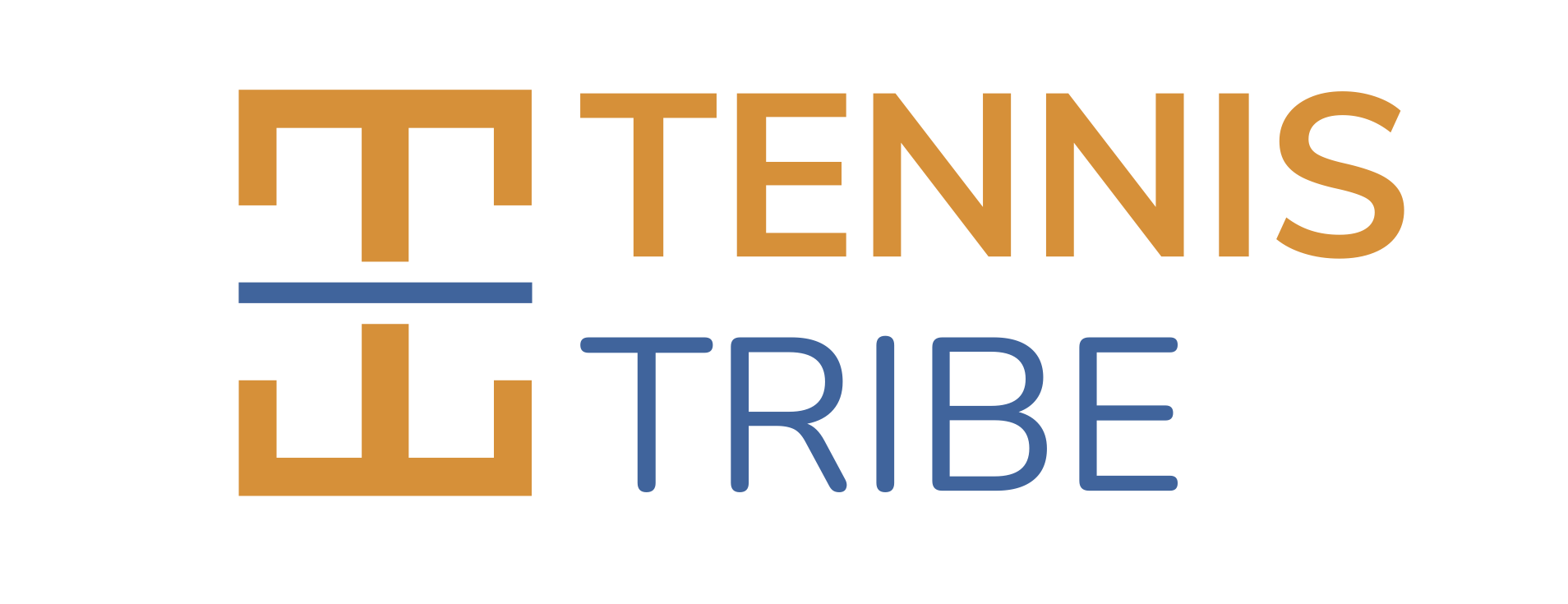
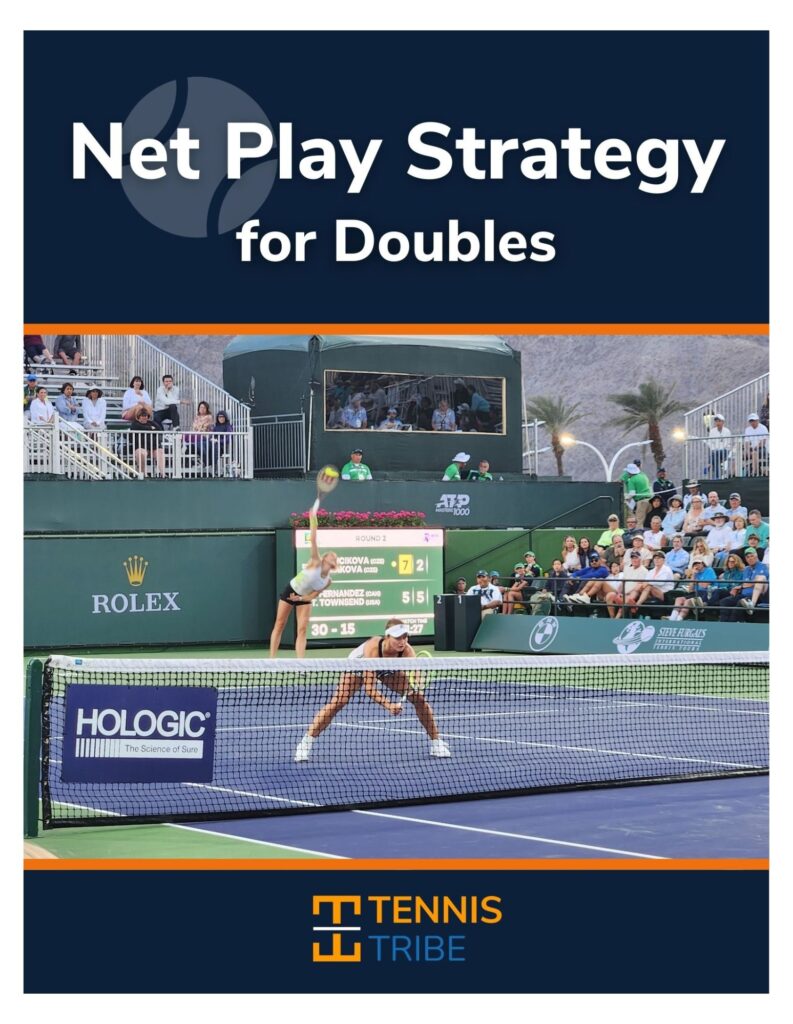
Will,
Very good content – some the best I have seen. Some additional thoughts:
I suggest poaching on your partners first serve of the match. It sends a signal to your opponent and they feel the pressure from the very beginning.
I you do not get beat up the line occasionally you are not poaching enough. I usually keep poaching aggresively until my opponent shows he can successfully hit up the line.
If your partner has a very week first or a very weak second serve. Back off behind the service line (all the way to the baseline if your partner has a very weak serve) and work your way in to poach.
I key off the net man on the other side. If he gets into an overhead position I back up and protect myself. If he remains neutral my partner has made a shot he will not poach and I react to where his partner moves on the court as you suggest. If he gets in a volley position I move towards the open court.
If your partner has limited mobility to the extend they can not get behind you to get a I stay at or behind the service line. If you don’t your opponent will have great success in loping you.
Thank you Sam!
I really like the idea of poaching on the first point. Sending a signal that the opponent has to go through you at the net is very important, and not enough players do it!
Agreed, getting beat down the line is a great measuring stick for how often you’re poaching. I’ve told some people that you should be getting beat up the line at least 3 times per match. Make them beat you 3 times before changing your strategy or worrying about covering the alley.
Interesting points on when your partner has a weak 2nd serve. I usually try to actually step in closer to the net and get ready for a volley. I find that still, most people won’t go at you because we’re trained to not go at the net player. It depends on your confidence at the net though. Being closer to the net makes it an easier volley if they do go at me, or sometimes they miss because they’ll go for more since I’m so close to the net.
Great points!
Love your emails and they get me so excited to go out and play dubs! Thank you🙏
Thank you Bob! I hope the lessons translate to wins on the court 🙂
Poaching on wide alley serves usually burn me.
Joel
On wide serves you either have to:
1. wait until the last second to poach, or…
2. fake and try to make them hit down your alley where you can recover to hit a volley into the gap in the middle of the court.
Of course, this also depends on the strength of your partner’s serve & the strength of the opponent’s return.
Thanks for the comment Joel!
great tips I’ll try to use it this weekend in waco and CATA tournament.
Thanks Loc! Good luck in the tournaments
Hi
As the server partner , what are you watching after the sound of your partner hitting his serve ? Do you look where the ball is landing and then looking to the receiver ? Or, do you concentrate on the receiver, watching his racket, to see if he will use a forehand or a backhand. With a compact or a big swing preparing for a lob return or a “normal” one ?
Hi Michel, you want to be watching the returner. Look for where they are hitting from, and which stroke they’re hitting.
A lot of times, I will decide before the point, if they have a backhand, I’m going to be more aggressive. As soon as I see them turn to the backhand side, I’ll start to poach.
Also, look for which serves they are uncomfortable with and communicate that to your partner serving. Hope this helps 🙂
Hi,Will! Your paper is really useful for me,I learns a lot,thank you very much! Yet I have a little confusion in tip 4 “poach as the oppenent starts his swing”,what is the exact time of “start swing”? Is it the start unit turn moment(A)? or when he finish his unit turn and the racket head pointing up(B)? or he is in the swing process and the racket head pionting behind(C)? while I tried to split step and poach to the center in moment A I often got passed the alley, it seems i move a bit earlier. But when i split in moment C, I always can not catch up with the ball pass the middel. Do u have any suggestions for me? Thanks again!
Thanks Tom! It sounds like somewhere in the middle is best for you. It really depends on the player and the pace of the ball that they are hitting. If you’re getting beat down the doubles alley, then you’re leaving a bit early and may want to try a fake. If you’re not catching up, then you’re leaving too late. But using variety with your timing is always good too 😉
Thanks Will! I will try more on the court.